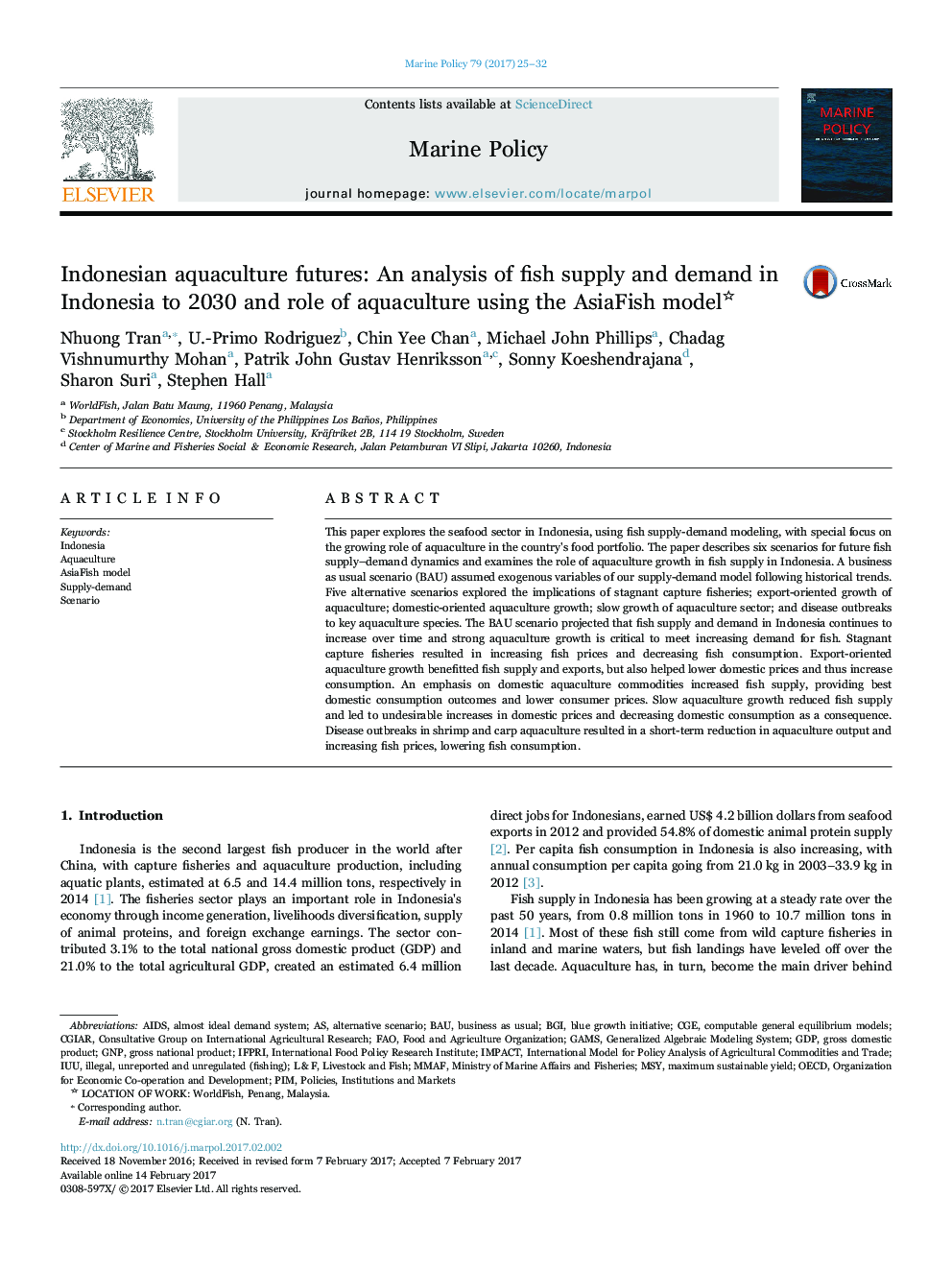| کد مقاله | کد نشریه | سال انتشار | مقاله انگلیسی | نسخه تمام متن |
|---|---|---|---|---|
| 5118335 | 1485500 | 2017 | 8 صفحه PDF | دانلود رایگان |

- According to the AsiaFish projections, supply and demand for fish will increase more than double between 2012 and 2030.
- Reported baselines and alternative scenarios results assessing alternative aquaculture growth options.
- Constrained domestic fish supply will result in increased consumer prices of fish and lowered fish consumption; Faster fish supply growth will induce higher fish consumption and lower consumer fish prices.
- Aquaculture will become increasingly important as a source for fish, overtaking capture fisheries as the major supplier of fish by 2030.
This paper explores the seafood sector in Indonesia, using fish supply-demand modeling, with special focus on the growing role of aquaculture in the country's food portfolio. The paper describes six scenarios for future fish supply-demand dynamics and examines the role of aquaculture growth in fish supply in Indonesia. A business as usual scenario (BAU) assumed exogenous variables of our supply-demand model following historical trends. Five alternative scenarios explored the implications of stagnant capture fisheries; export-oriented growth of aquaculture; domestic-oriented aquaculture growth; slow growth of aquaculture sector; and disease outbreaks to key aquaculture species. The BAU scenario projected that fish supply and demand in Indonesia continues to increase over time and strong aquaculture growth is critical to meet increasing demand for fish. Stagnant capture fisheries resulted in increasing fish prices and decreasing fish consumption. Export-oriented aquaculture growth benefitted fish supply and exports, but also helped lower domestic prices and thus increase consumption. An emphasis on domestic aquaculture commodities increased fish supply, providing best domestic consumption outcomes and lower consumer prices. Slow aquaculture growth reduced fish supply and led to undesirable increases in domestic prices and decreasing domestic consumption as a consequence. Disease outbreaks in shrimp and carp aquaculture resulted in a short-term reduction in aquaculture output and increasing fish prices, lowering fish consumption.
Journal: Marine Policy - Volume 79, May 2017, Pages 25-32